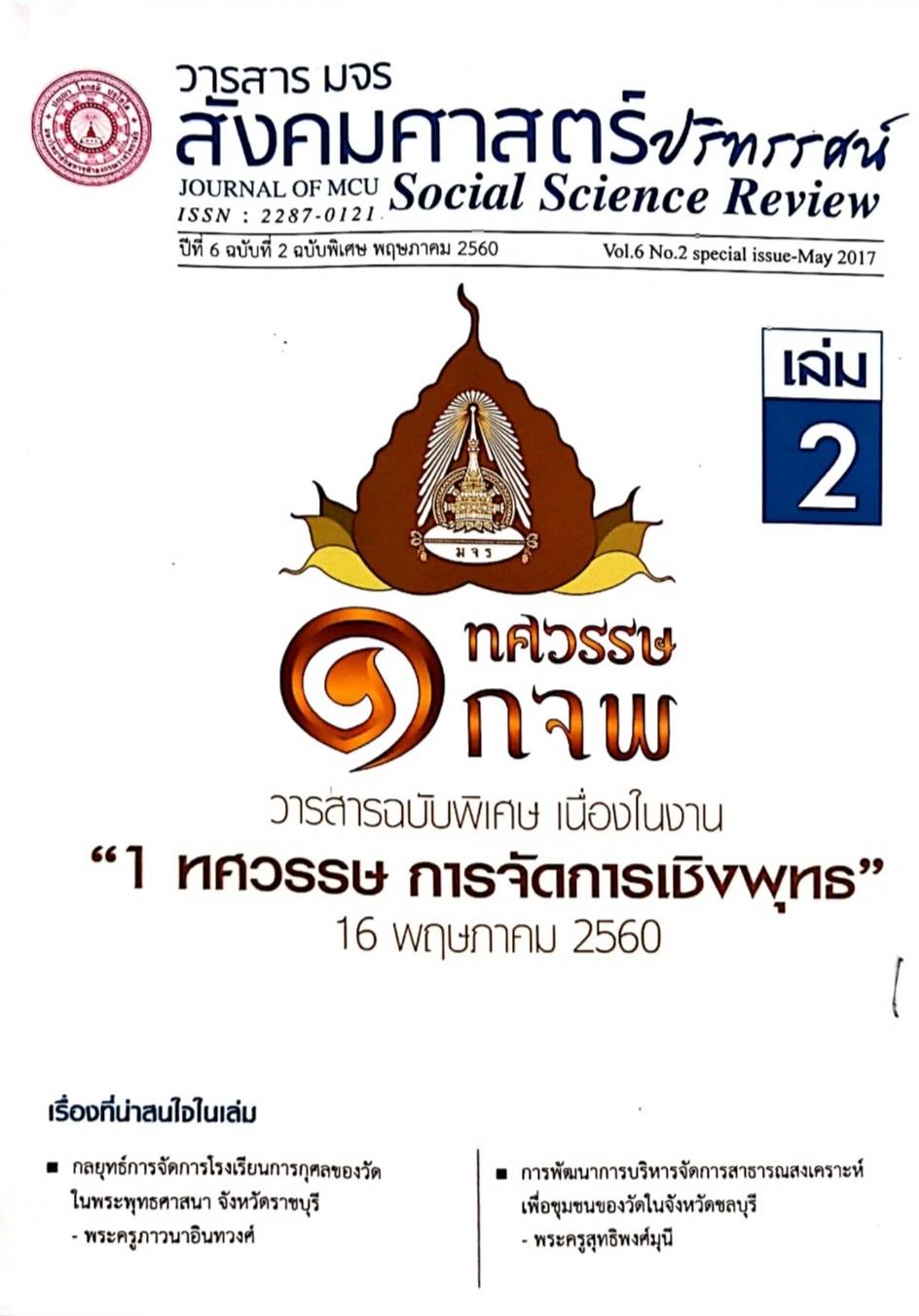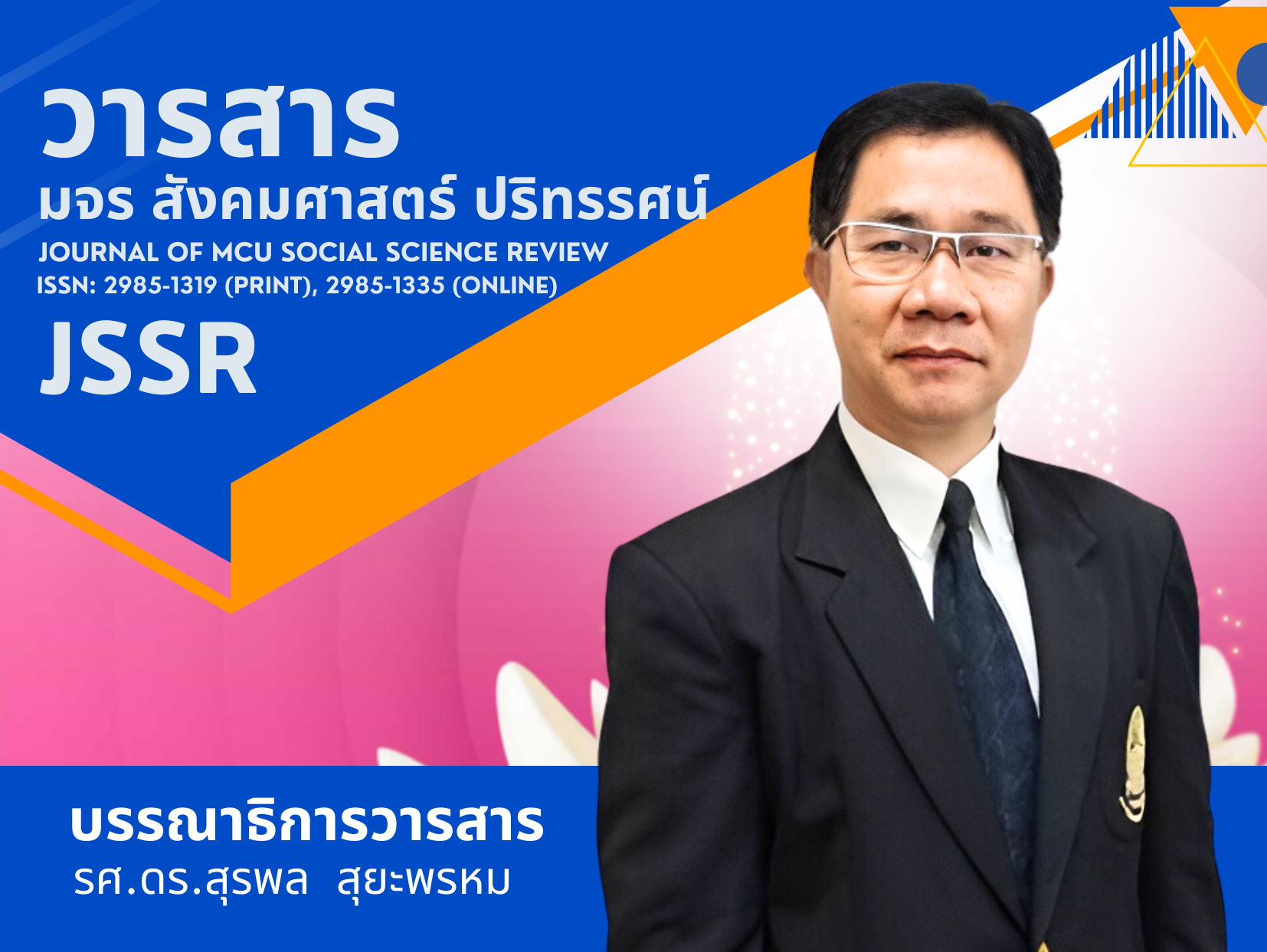STICKY RICE MERIT TRADITION : INHERITANCE OF LOCAL WISDOM IN BELIEFS AND RITES OF SOUTHERN ISAN COMMUNITIES
Keywords:
Sticky rice culture, inheritance of sticky rice culture, local wisdom, belief and riteAbstract
This thesis has 3 objectives which are 1) to study the history of beliefs and rites regarding sticky rice of southern Isan communities, 2) to study the current condition and problems in culture, tradition, beliefs and rites regarding sticky rice of southern Isan communities and 3) to inherit local wisdom, culture, tradition, beliefs and rites regarding sticky rice of southern Isan communities. This research is a qualitative research in which the sample group was chosen by purposive sampling and comprises 94 knowledgeable people, practitioners and information providers. The tools used to collect data were survey form, participative observation form, in depth interview form and work shop recording form. The data was analyzed and the result was presented by descriptive analysis. Findings were as follows:
1. For the history of beliefs and rites regarding sticky rice of southern Isan communities, they believe that 6-7 months before planting and after harvesting in December and January, there must be a feast for Tahag Ghost as they say “Let down when start and have a feast when finish”. They believe that the rice guardian spirit must be invited and rice paddies must be kept in the barn that is tightly closed until a barn opening rite on the 3rd waxing moon of February and the rice paddies will be taken to make merit at the temple. On this day, there is another tradition called Hab Foon Sai Nar with the belief “Frog has no mouth, Otto has no anus, gooseberry is sweet” of southern Isan communities.
2. Presently, it was found that the rice merit traditions such as barn opening rite is performed on the 3rd waxing moon of February, Khao Jee Rite and Koon Larn Rite where people bring rice paddies to the temple and say their prayer. For Kayasart Tite or Sandone-ta tradition of Cambodian-Thai is performed on the 10th waning moon of November and is performed on the 15th waxing moon of November by Lao-Thai and Korat-Thai. The three southern Isan communities have common belief that on the aforementioned date and time, the ghosts of their ancestors will come to the temple to receive portion of merit from their
descendants. If they do not see their descendants, they will be sad and will curse their descendants to suffer hard time in making a living. The problems found are the sticky rice planting by southern Isan
communities have decreased due to low selling price of sticky rice. Most people also consume regular rice and during the festival, they must buy sticky rice from the market which are expensive causing them some budget problem. There is a tendency that these traditions and beliefs such as Khao Jee tradition may be lost from southern Isan communities.
3. In order to inherit local wisdom, traditional merit, belief and ritual culture regarding sticky rice of southern Isan communities, there are participation by communities, temples and schools as follows: Communities: The village chiefs or community leaders arrange community meeting to schedule the date, time and place for the merit rite and every household have the opportunity to participate in the rice merit tradition. Temples: The temples are the spiritual center of the people. Monks are the host for the venue, facilities and equipment for the rite and provide Buddhist sermon regarding the benefit of the rice merit. The participants receive blessing, sprinkled holy water and sacred object in accordance with their belief. Schools: Schools are the learning sources of the communities by provi ing activities regarding the inheritance of rice merit tradition to instill the learners and interested people the awareness of the correct procedure of the rites. They emphasize participation by students in the tr ditional rites that the communities are organizing with continuous follow up evaluation.
References
Eiam Thongdee. (2537). Rice Culture: Rice Rituals and Farming. 2ndEdition, Bangkok: Sahathammik,
Prakru Thampanasunthorn, at Wat Nong Bua Thung, Ta Jan Sub-district, Khong District, Nakhon Ratchasima on 28 April 2015.
Samart Chanthasoon. (2534). Nakhon Ratchasima’s Folk Wisdom. Nakhon Ratchasima: Local Information Center for Development of Nakhon Ratchasima Teacher Training College.
Sanya Sanyawiwat. (2533). Sociological Theory ; Content and Basic Usage. Bangkok: Choa Paya Printing.
Sati Boonmamorn, at Bansamrhongmai, Lahan Sai District, Buri Ram Province, on 28 April 2015.
Silaporn Narkkaratan (2538). “Community Learning System for Sustainable Development: Case Study of South Isan Community”. Journal: Sukhothai Thammathirat, Vol.8, No.2, May-August 1995, pp.38-48.
Songkoon Chantachon. (2549). Transfer of Folk Wisdom on Soil, Water, and Forest Resources of Ka Leng Ethnic Group. Mahasarakham: Art and Isan Culture Research Institute, Mahasarakham University,
Thawat Boonnanothok. (2532) Isan Traveling. Khon Kaen: Research and Development Institute, Khon Kaen University.
Downloads
Published
How to Cite
Issue
Section
License
Copyright (c) 2020 Journal of MCU Social Science Review

This work is licensed under a Creative Commons Attribution-NonCommercial-NoDerivatives 4.0 International License.
In order to conform the copyright law, all article authors must sign the consignment agreement to transfer the copyright to the Journal including the finally revised original articles. Besides, the article authors must declare that the articles will be printed in only the Journal of MCU Journal of Social Sciences. If there are pictures, tables or contents that were printed before, the article authors must receive permission from the authors in writing and show the evidence to the editor before the article is printed. If it does not conform to the set criteria, the editor will remove the article from the Journal without any exceptions.




